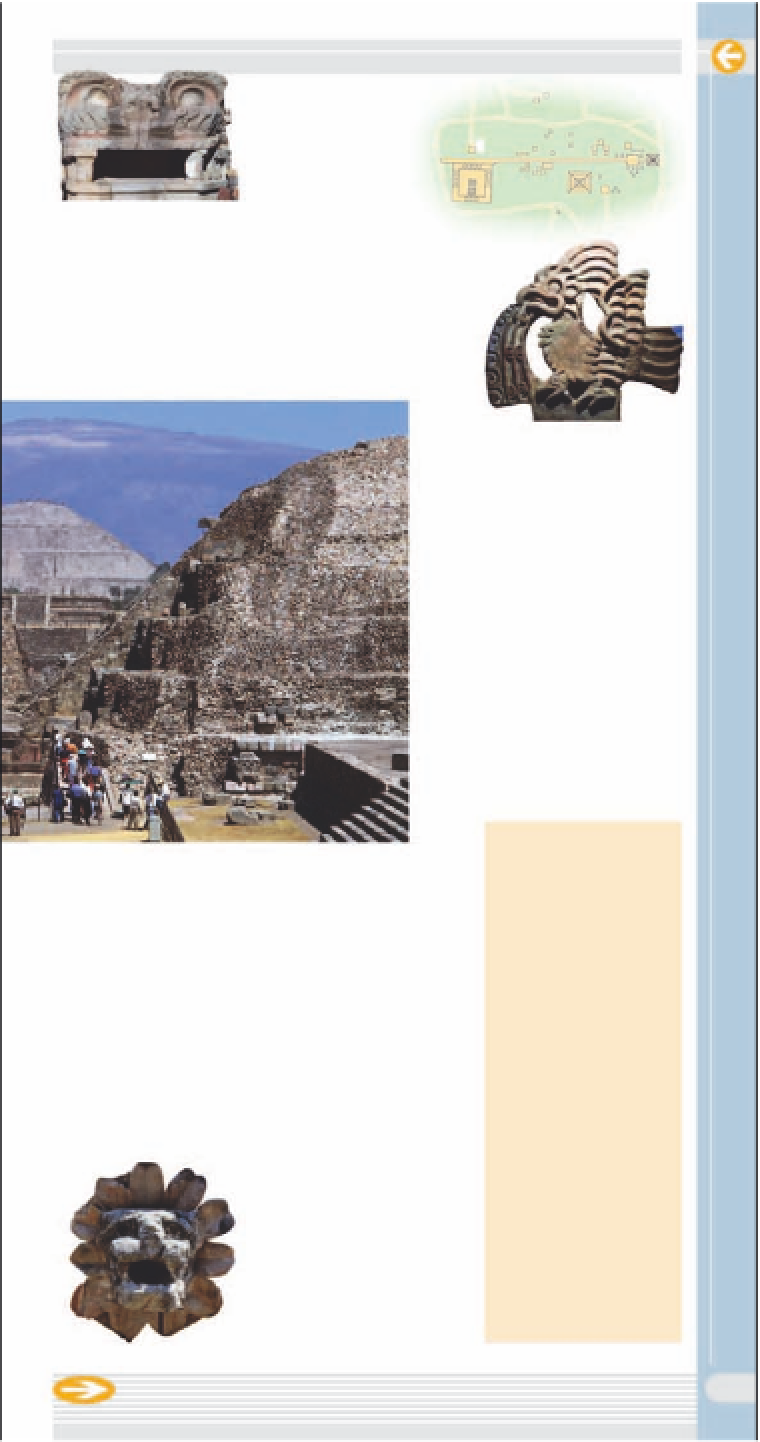Travel Reference
In-Depth Information
^
Museum
The museum
displays artifacts
found on-site, as
well as
archeology,
architecture, and
history exhibits
(right)
. The glass floor in
the main room covers a
scale model of the site.
Outside, the shady
botanical garden is an
excellent place to relax.
$
Quetzalpapalotl
Palace Complex
Three main palaces in
the complex are believed
to have been the resi-
dence of the Pyramid of
the Moon's High Priest
(see p34)
.
(
Tetitla
Located west of the loop
road, this complex of dwellings
illustrates how buildings were
constructed and reconstructed
over hundreds of years.
Fragments of intricate murals
adorn many of the walls within
this compound.
)
Atetelco
This major dwelling complex
has its own small altar, and
many finely detailed murals
depicting jaguars, coyotes, birds,
and human figures. The complex
is located to the west across the
loop road.
Site Guide
You can park in any of
the five parking lots. Lot
#1 is the closest to the
Visitor Center. Across
the road is the Citadel
and Temple of
Quetzalcoatl. Head
north along the Avenue
of the Dead, and turn to
the right to visit the
museum. Next proceed
to the Pyramid of the
Sun. Continue down the
Avenue of the Dead to
see the Jaguar Mural on
the right side of the
road and then the
Pyramid of the Moon at
the north end of the
Avenue. Finally, explore
the structures of the
nearby Quetzalpapalotl
Palace and complex.
%
Temple of
&
Ciudadela
Quetzalcoatl
The pyramid built around
AD 200 is ornately
decorated with sculptures
of feathered serpents
(below)
, the rain god
Tláloc, and the mythical
crocodile-like symbols for
fertile land. Numerous
grave sites containing
sacrificial victims and
soldiers have been found
within the pyramid.
This huge compound
with its massive central
pyramid is surrounded by
walls that measure
1,312 ft (400 m) on each
side. The massive walls
of the compound are 23-
ft (7-m) high with pyra-
midal structures on top.
*
Palace of
Temantitla
The most important and
colorful murals of the site
cover the walls of this
dwelling complex. Richly
detailed red, green, and
yellow murals depict
Tláloc and his watery
universe. Other murals
include a priest sowing
seeds and people
swimming and playing.
33
Visit the Museo Nacional de Antropología to see more of the
objects found at Teotihuacán
see pp8-9


































